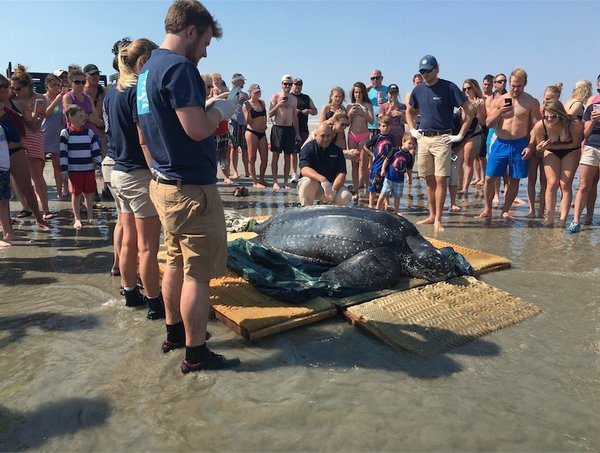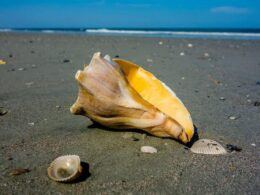If you spend any of your spare time pursuing social media, you may very well have stumbled across a particularly surprising viral photo: the inside of a leatherback turtle’s mouth.
That doesn’t sound too terribly intimidating, right? Along with the rest of their sea turtle brethren, these true beauties of the sea have a special place in the hearts of Folly folks.
A while back, king tides forced a weakened leatherback into the marsh behind Folly Beach. Naturally, rescuers whisked the massive 5-foot-long, 440-pound creature to the South Carolina Aquarium where it was dubbed “Mariner” by the Sea Turtle Rescue Program.
Jenna Cormany, a wildlife biologist with the Department of Natural Resources, said the sea turtle was in decent condition, all things considered. “She was active, but she was lethargic,” Cormany said. “She helped us out a little bit. She crawled onto the tarp on her own. She was large and in charge.”
Like 2015’s “Yawkey” — a 475-pound leatherback found stranded on a remote beach off the coast — Mariner will be rehabilitated by the Sea Turtle Rescue crew and eventually released back into the sea.
The largest turtle in the world, leatherbacks can weigh in at up to 2,000 pounds and measure over six feet in length, according to the National Oceanic and Atmospheric Administration. Despite their impressive size, though, these gentle giants are rarely seen.
It makes sense, then, that the inside of their mammoth mouths have remained a mystery for the most part — until now. Behold, what lies beneath a leatherback’s beak.
While the hundreds of sharp stalactites lining the leatherback’s mouth (all the way down to its stomach, no less) undoubtedly look like the stuff nightmares are made of, they pose little threat unless you’re a jellyfish.
The staple of leatherbacks’ diet, jellyfish are composed mostly of water and are therefore not a particularly dense source of nutrition. As such, leatherbacks rely on these jagged rows of “teeth” to help them digest as many jellyfish as possible without burning through their energy reserves.
Sea turtles need all the energy they can get. Folly mainly sees loggerhead nests, but our beloved beach is within the natural habitat and nesting range of Kemp’s Ridley, Green Sea Turtles and — yep! — even leatherbacks.
And if the mental image of the leatherback’s mouth isn’t deterrent enough not to interfere with nesting turtles, beachgoers should bear in mind that all seven species of sea turtles are on the Endangered or Threatened species list and protected by federal and state laws.













